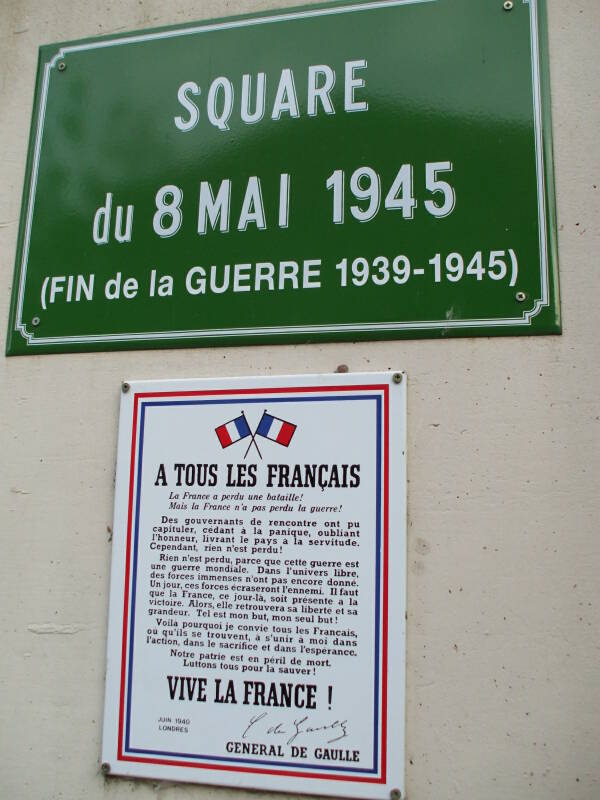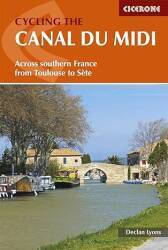
Canal du Midi
Béziers to Colombiers
| 9.0 | kilometers |
| 9 | locks |
| 24.03 m | elevation gain |
We're starting our second day of our week-long trip along the
Canal du Midi.
Yesterday we picked up our rented boat and traveled
13 km along the canal.
Today we will only progress another nine kilometers.
We have to pass through a staircase of seven directly
connected locks.
They post a schedule where the lock staircase operates
down only for a while, and then up only.
There will be sequences of several boats moving
in each direction.
We need to get ready and get into the upstream queue,
then wait our turn.
It will be up in the afternoon by the time we get
through the lock staircase.
As on many mornings, a duck family was there to get us moving in the right direction.
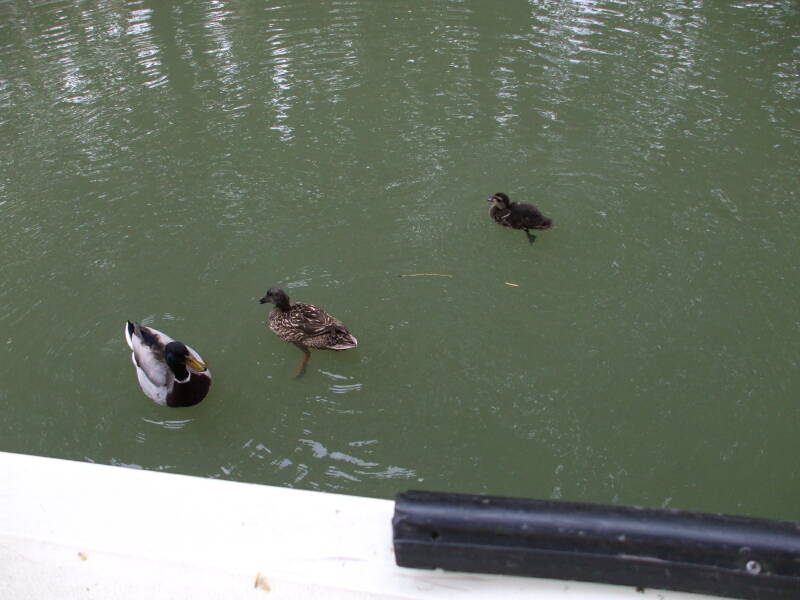
We had two single locks to pass through before reaching the staircase. This one had an enclosed control cabin.
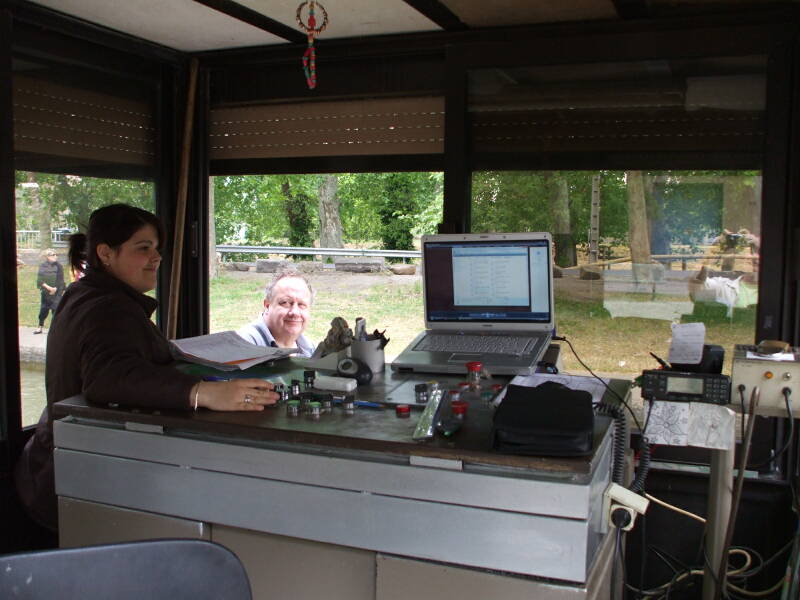
The lockhouse placard shows that last lock we passed through the day before was 3,910 meters behind us, to the right.
The next lock ahead of us, the Lock of the Orb river, is just 417 meters away. In 1,732 meters from here we reach the start of the Fonserannes staircase.
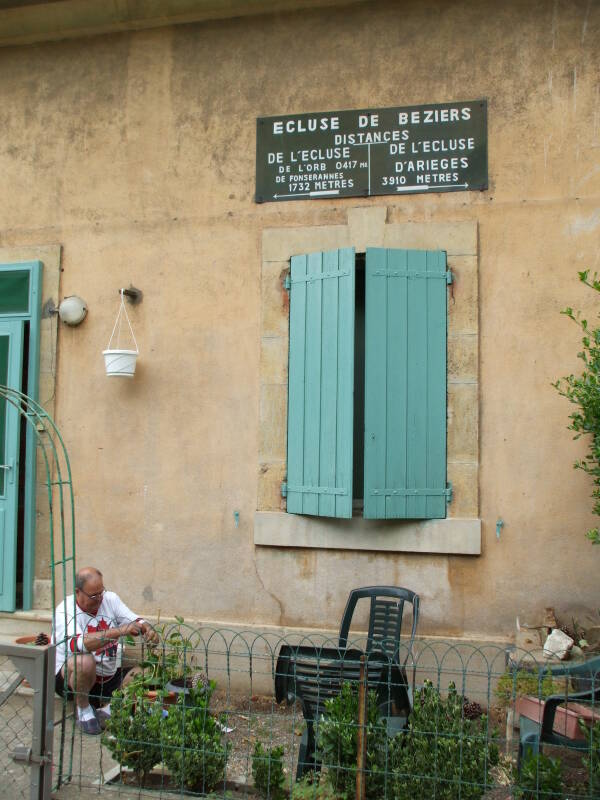
Our boat is coming out of the lock, I need to get on board.
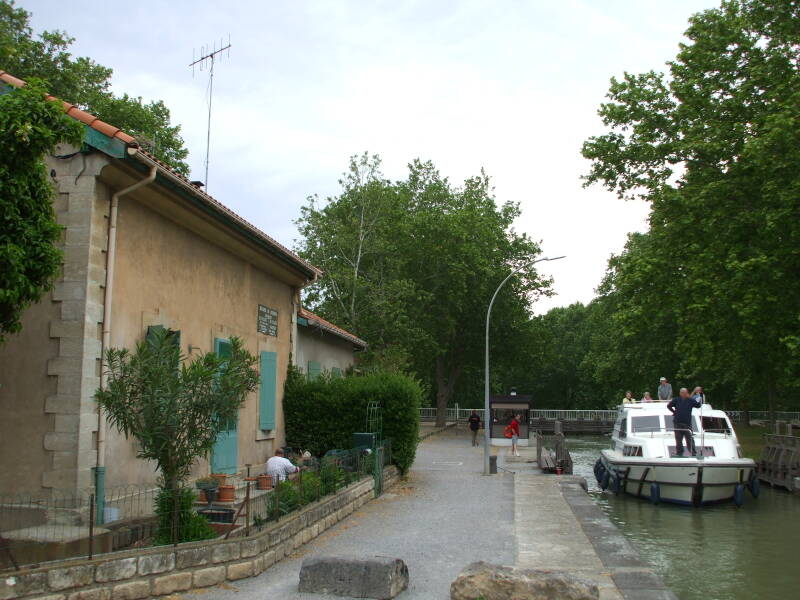
And now we're in the long queue. We're through the second individual lock, and we're tying up to wait for our turn.
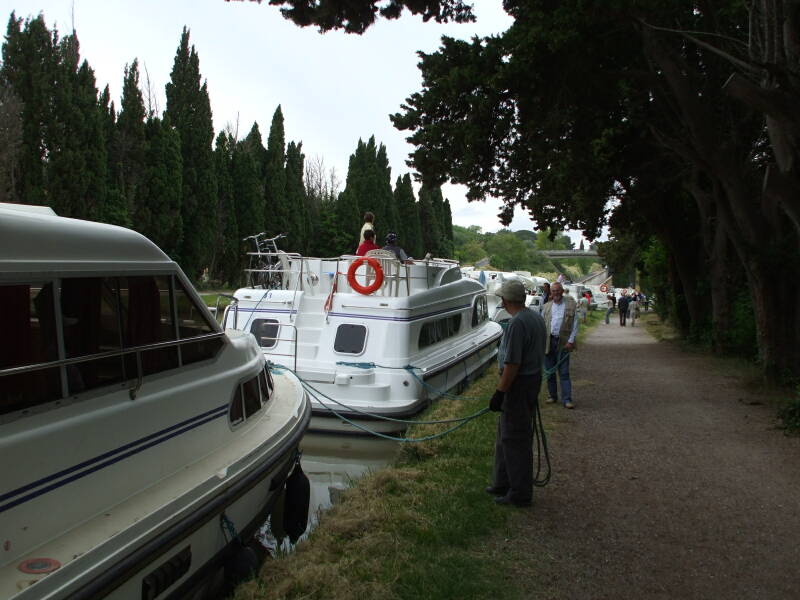
Here we go! They have opened the lower gate of a lock for us to proceed into it. The wet walls show how much this one will raise us.
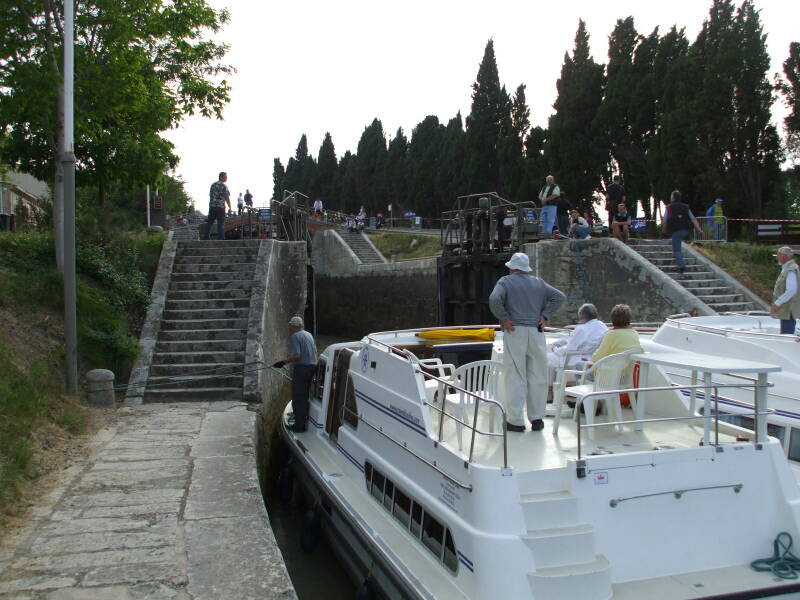
These oval locks can hold four boats, two side by side and then another two.
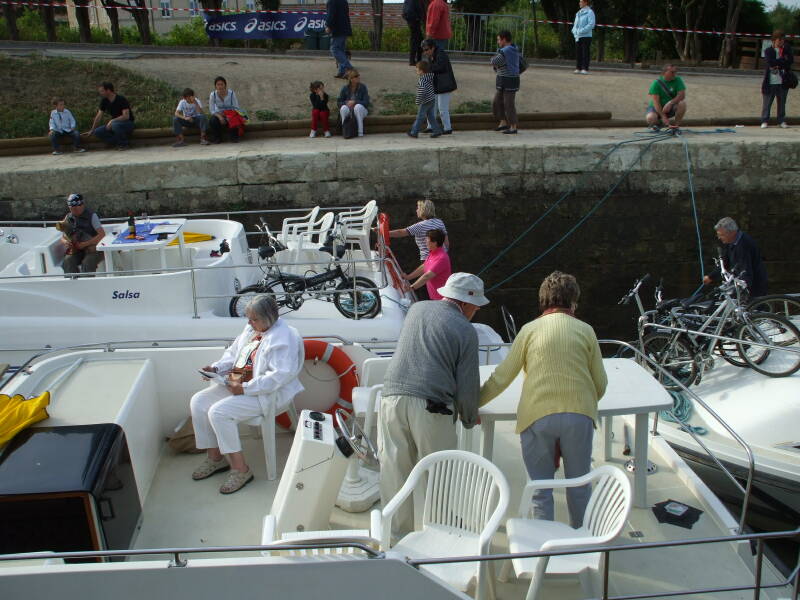
They open the gates widely in order to cycle the locks faster. This makes it important to use your lines to keep from banging against the other boats. Larry has stepped from the upper forward deck onto the lock wall, to handle the forward line from there.
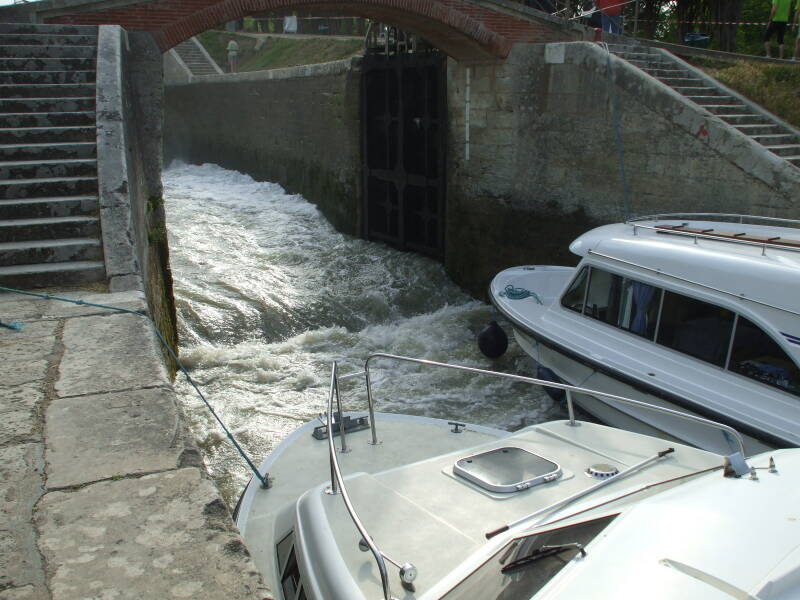
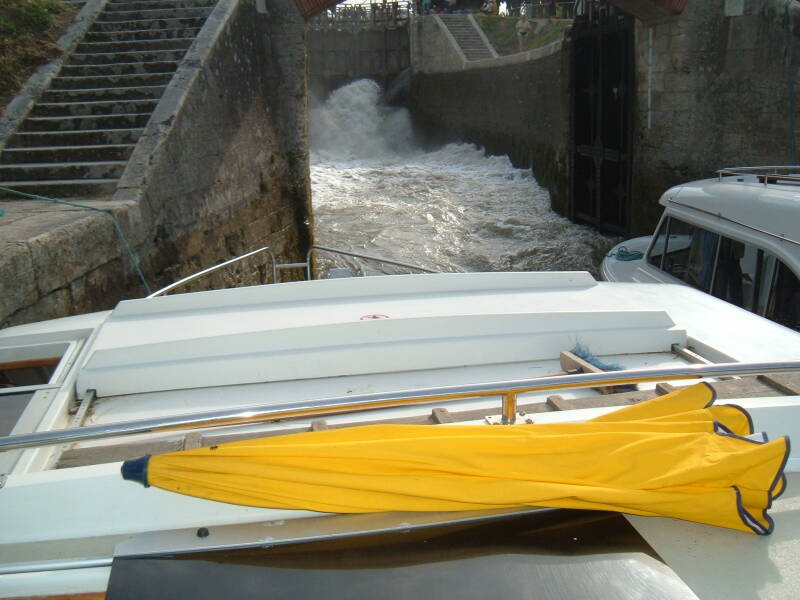
Below we're preparing to move up one more lock chamber. This series of locks at Fonserannes is excavated from the solid rock in a hillside with varying slope. A series or staircase of locks must have equal volumes, but the varying slope requires their shapes to vary.

The construction of this complex structure was subcontracted out to two illiterate brothers, the Medhailes, and it was mostly built by the women from the Roman bath settlements.
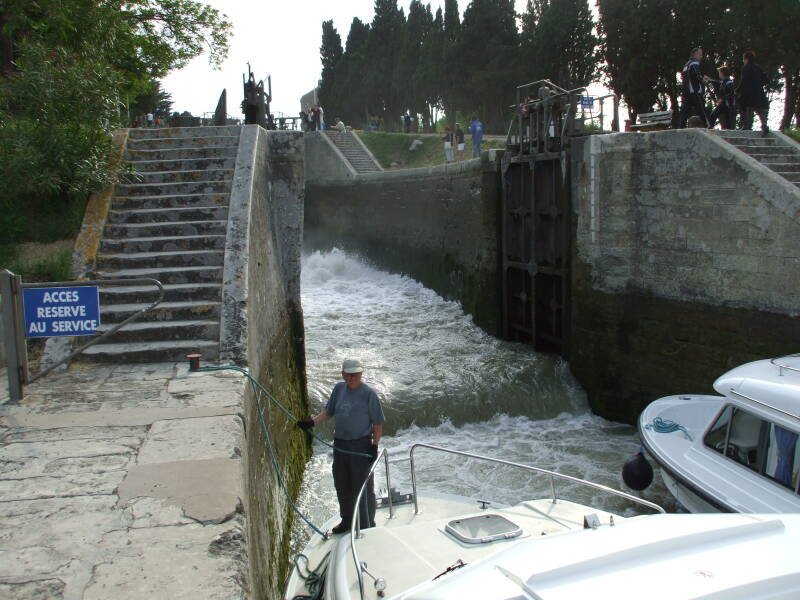
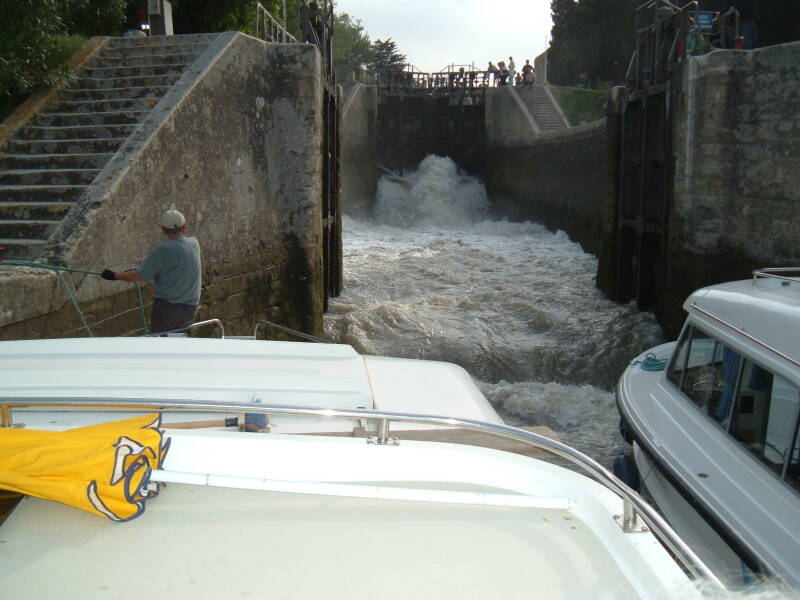
The Fonserannes Water Slope is a (so far) failed project, an attempt to build a water slope or inclined plane parallel to the staircase of locks. It was a tractor intended to carry a water chamber which could hold a vessel of up to 350 tonnes displacement. It was built in 1980–1983, and trials began in 1984. Oil leaked from the hydraulic system onto the concrete tracks, making its wheels unable to maintain sufficient traction. They worked until 1986 trying to resolve the technical, contractual, and insurance issues. The system was officially abandoned in 2001. There is still talk about getting it to work.
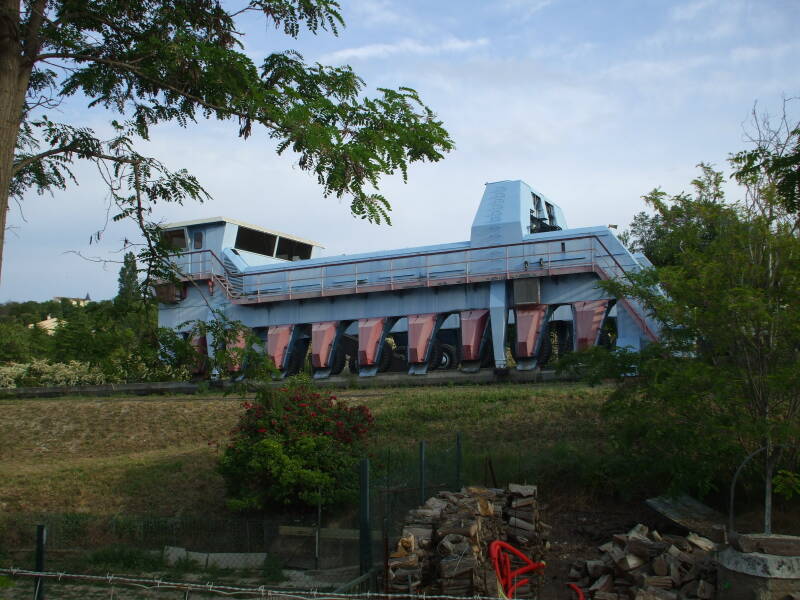
We exit the Fonserannes flight of locks into the longest level section of the canal.
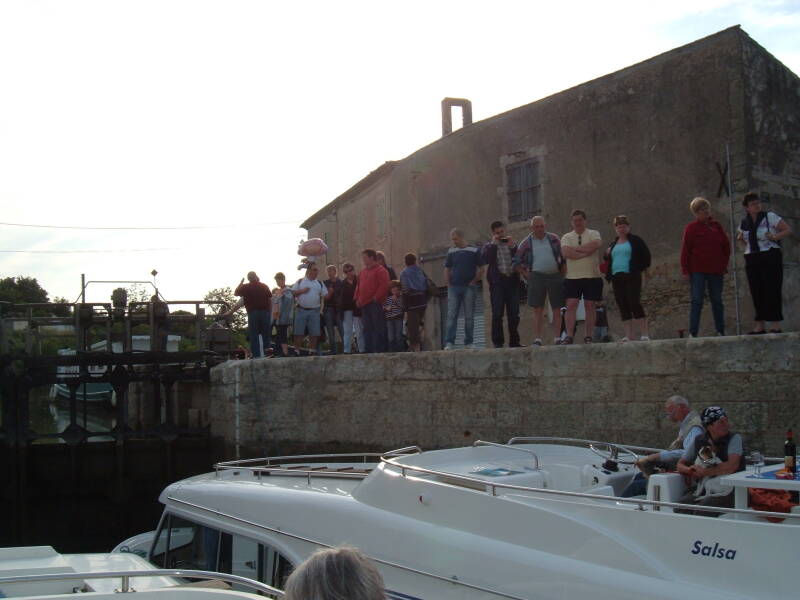
It will be 53.87 km to the next lock. We will reach it the day after tomorrow.
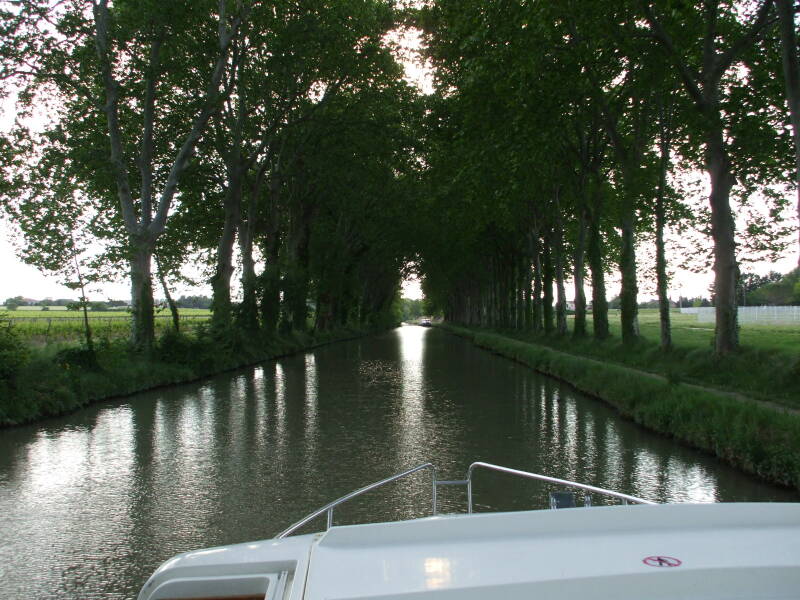
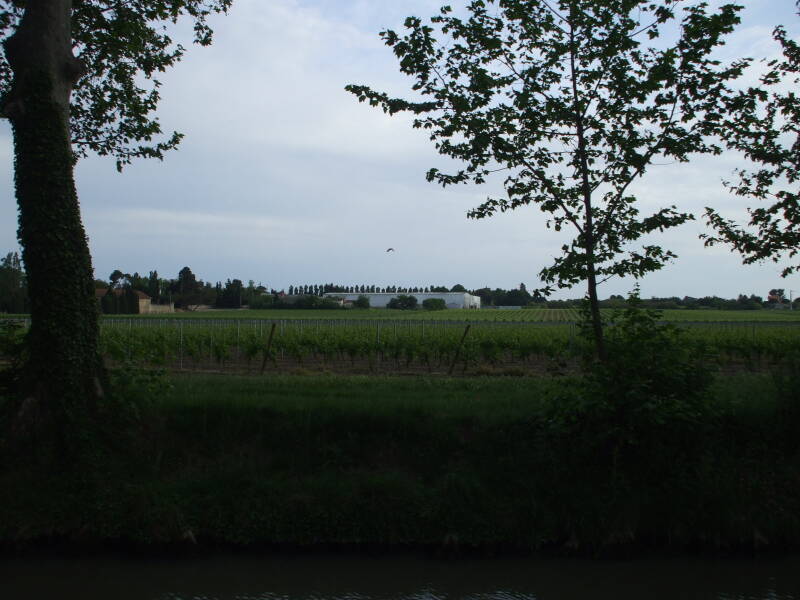
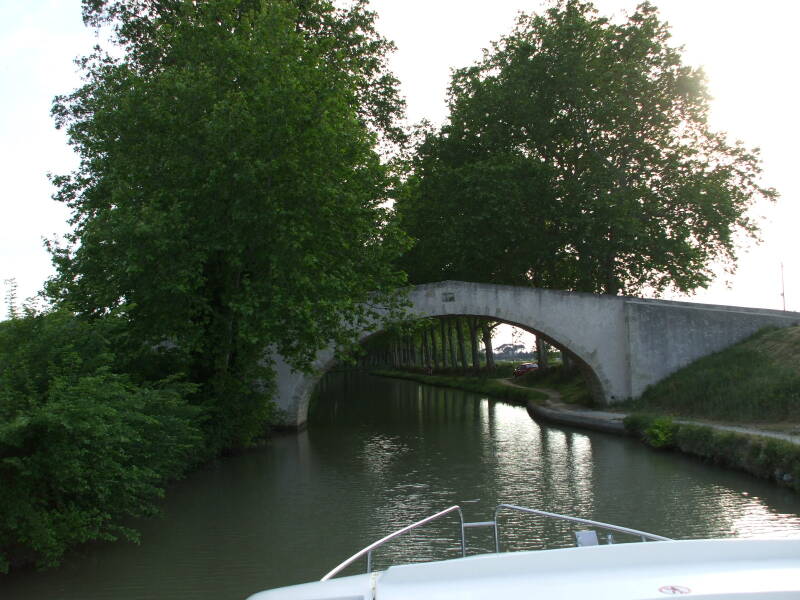
The canal was originally lined with willow trees, which grow rapidly. Irises were planted to help anchor the banks.
Then, in the 1700s, mulberry trees were planted to support silkworm farming. The mulberries were replaced in the 1770s with Italian poplar, planted as it was very a productive source of wood.
Through the 1800s, poplars were cut for their wood, and plane trees planted in their place.

The plane trees lining much of the canal look nice, but they cause problems. Their roots destroy the banks, requiring frequent rebuilding, and their leaves fall into the water and sink, requiring dredging.
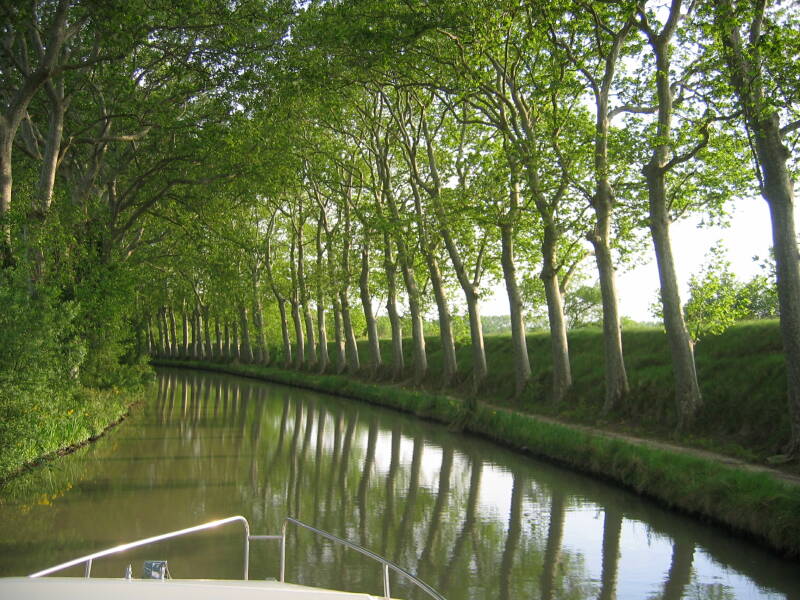
The plane trees have been infected since 2006 by a fungus, Ceratocystis platani, for which there is no known treatment. Selective cutting failed to stop the spread of the disease. It's estimated that by 2035 to 2040, all 42,000 plane trees lining the Canal du Midi will have to be cut down and replaced by other species, possibly ash.
We tied up for the night at Colombiers.
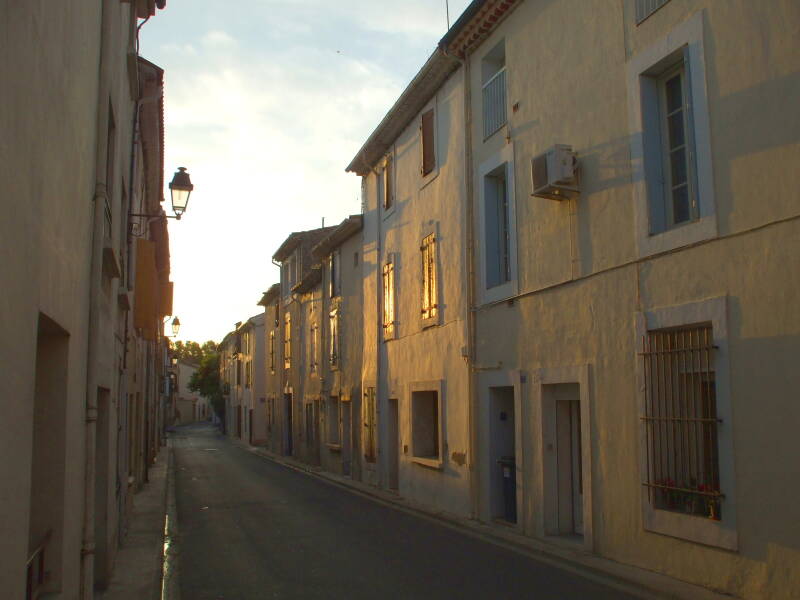
We explored the town before finding a place to get dinner.
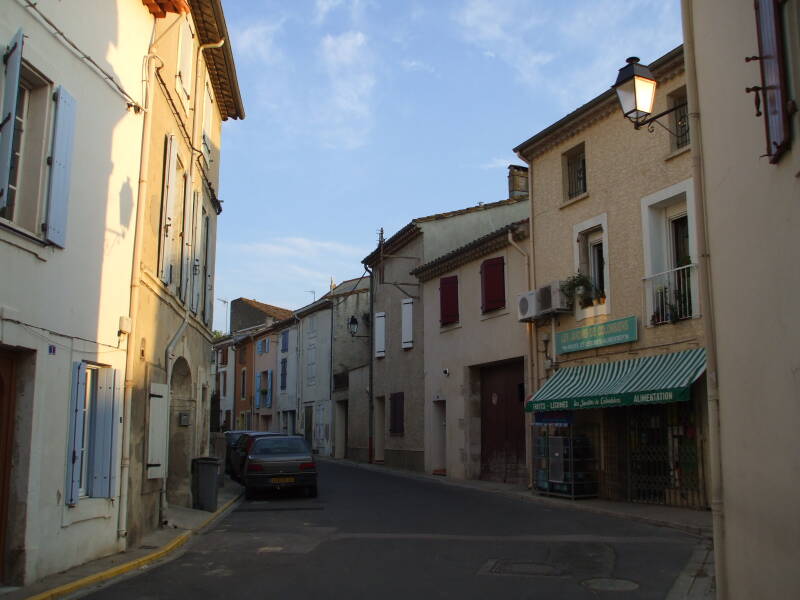
Resistance
A square in Colombiers is named for the day World War II ended in Europe. The small sign references the famous address Charles de Gaulle made over a BBC broadcast from London in June 1940. It was one of the most important speeches in French history, and is considered to have been the origin of the French Resistance as well as Wallonie Libre, a Belgian resistance group.
The below, which you frequently see in France, is actually a reproduction of a motivational poster which was distributed all over London in August 1940. Its content is similar to de Gaulle's June speech, but slightly different.
TO ALL FRANCE
France has lost a battle!
But France has not lost the war!
The meeting rulers were able to capitulate, giving in to panic, forgetting honor, delivering the country to servitude. However, nothing is lost!
Nothing is lost, because this war is a world-wide war. In the free world, immense forces have not yet arisen. One day, these forces will crush the enemy. France must, on that day, be present for victory. Then she will regain her freedom and her grandeur. This is my goal, my only goal!
This is why I invite all French people, wherever they happen to be, to unite with me in action, in sacrifice and in hope.
Our homeland is in peril of death. Let's fight to save her!
LONG LIVE FRANCE!
